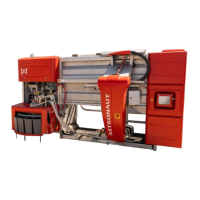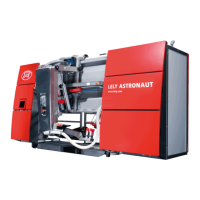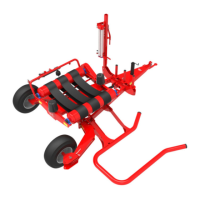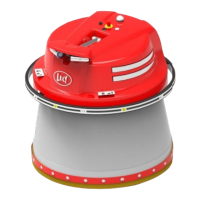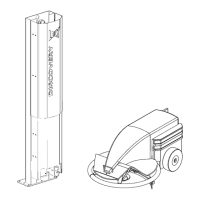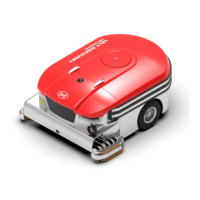Chapter 6 - page 5
Operator’s manual ASTRONAUT
M-HE.002.1003
• Check if the bleed air holes (figure 6.6) are still open.
Blocked bleed air holes can be recognised by a milk column
which moves up and down in the milk tube instead of being
transported. Pierce the holes (use special bleed hole
needle) if necessary.
• Check the brush cleaning system for signs of damage
(figure 6.5). Replace worn brushes. Replace the cleaning
system as follows:
• Select the option "Test menu > Robot > Robot turn in
arm". For more information see section 3.4.16 ’Testmenu’.
• Disengage the allen-headed bolts and plastic washers from
the front side of the cleaning brushes (figure 6.7).
• Remove the brushes from the drive shaft.
• After replacement install the brushes to the shaft again by
means of the conical bolt and the ring.
• Leave the "Test menu".
Cleaning the brushes is essential to prevent the transfer from
bacteria from one cow to the other. The bacterial count in the
milk can increase if the brushes are not properly cleaned.
Prevent too strong a dosing to prevent irritation of the teats.
• Check the milk and pulsation tubes (figure 6.8) for damage which may be the result of cows having stood on
the tubes.
• Regularly check the teat cup cords for excessive wear and thickening. Renew if necessary.
• Damage may occur especially near the hose clamps as well as the area where the twin tube
branches into two separate tubes.
Figure 6.6 Bleed air hole teat cup
Bleed hole
Figure 6.7 Cleaning brush installation
Brushes
Plastic washer
Allen-headed bolt
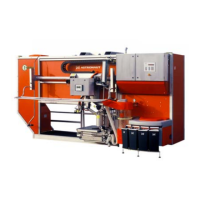
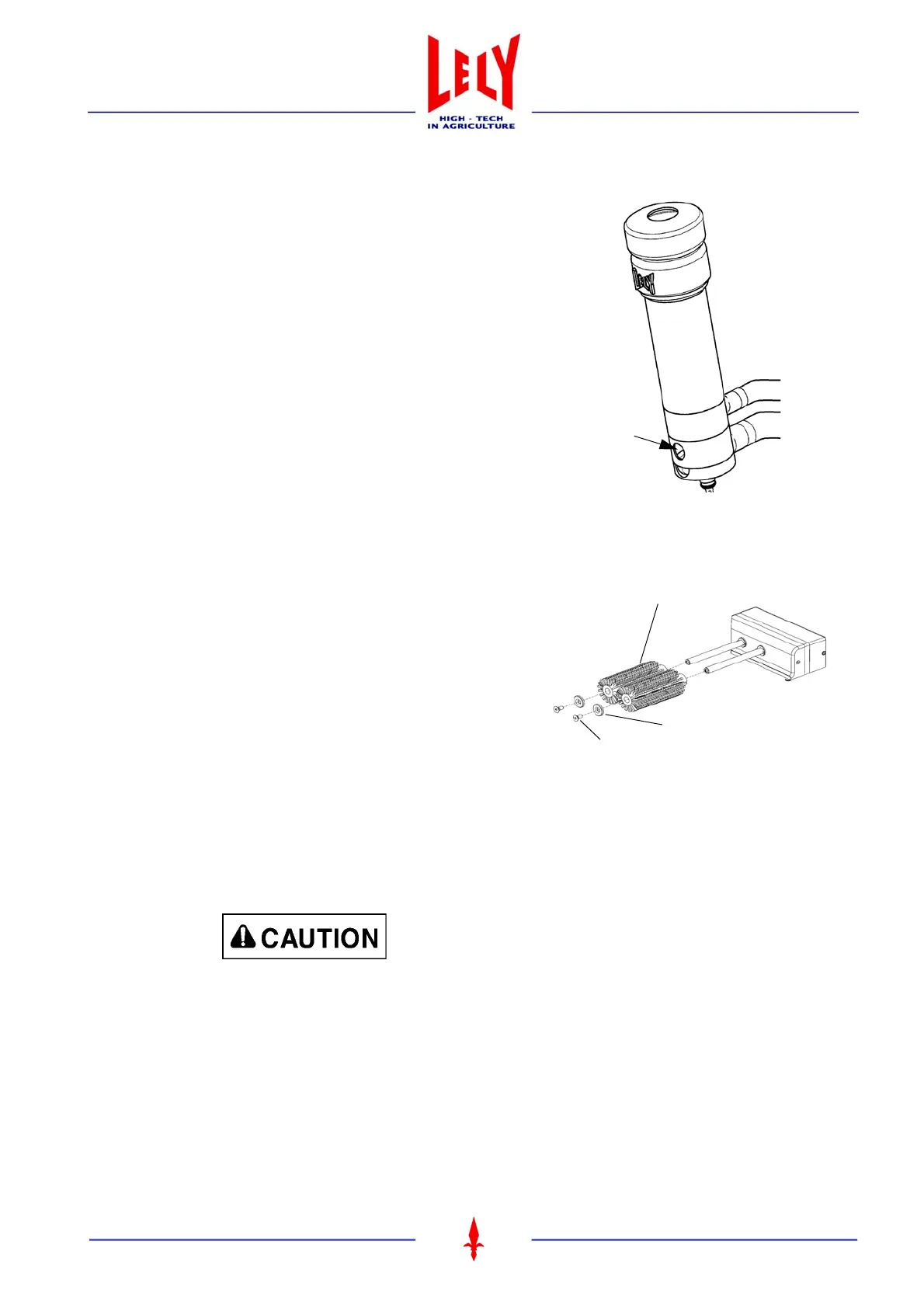